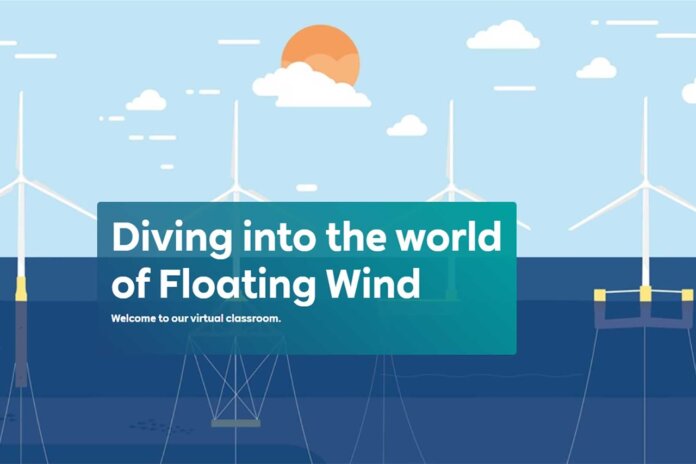RWE has launched an educational hub designed to make learning about floating wind interactive and accessible to all.
Floating wind technology presents an opportunity to harness the untapped potential of deep-water coastal areas, which are not accessible to conventional fixed-bottom offshore wind farms. This new clean energy source and the technology is constantly evolving.
RWE aims to have 1 GW of floating wind projects under construction by 2030. The company is participating in several floating demonstration projects: TetraSpar, DemoSATH and Aqua Ventus. To help stakeholders understand this complex technology, RWE has invested in a package of free-to-use floating wind educational materials.
“Floating wind technology has the potential to reshape global energy focus and help countries pursue their goals towards net zero,” states Sven Utermöhlen, CEO of offshore wind at RWE Renewables. “We’re committed to playing a leading role in deploying this innovative technology especially to unlock opportunities in countries with deeper coastal waters, such as in the Celtic Sea, or our demonstrator sites in Spain, the United States and Norway.”
“We know that there are a number of questions that communities, stakeholders and media have around this technology,” Utermöhlen continues. “That is why we have invested in the launch of the one-stop-shop, floating wind virtual classroom. It will provide a go-to hub containing information on how floating wind turbines work and how they are built. Through a combination of FAQs, animations and graphics, we have sought to bring floating wind to life.”
RWE’s floating wind virtual classroom provides a digestible understanding of the components of floating wind platforms and the innovative engineering solutions that allow them to function in deep water. The classroom also provides a series of videos and graphics to make learning about wind energy an engaging and interactive experience. Beyond digging into how floating wind farms and technology works, RWE presents key facts on why and how floating wind can be used to help achieve net-zero emissions targets.




